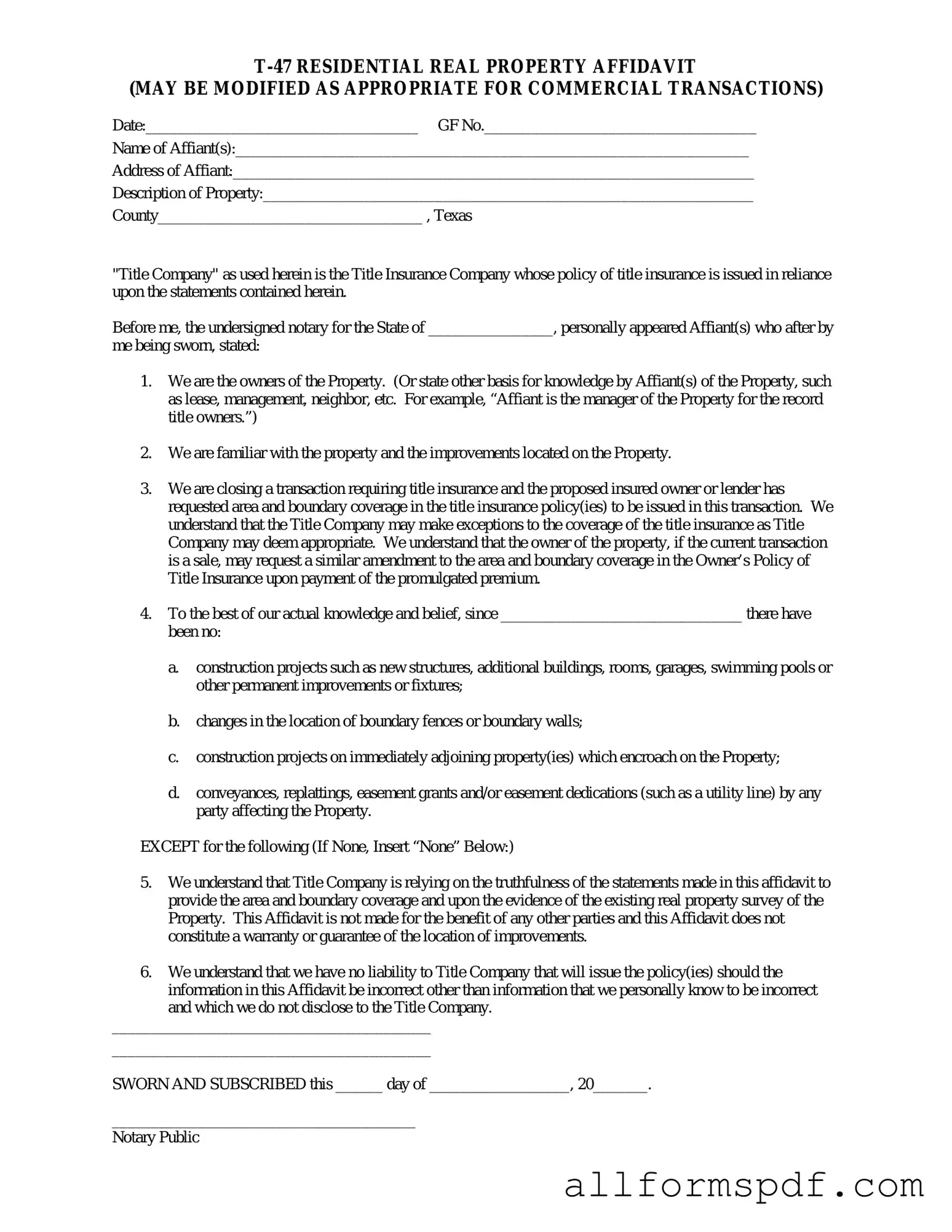Filling out the Texas residential property affidavit T-47 form can be a straightforward process, but several common mistakes often occur. One frequent error is providing inaccurate property descriptions. The property address should be clear and precise. Omitting essential details, such as the county or zip code, can lead to confusion and delays in processing.
Another common mistake is failing to include all required signatures. The T-47 form requires signatures from all parties involved in the transaction. If a signature is missing, the form may be deemed incomplete, which can stall the entire process. It is important to double-check that everyone has signed before submitting.
People sometimes overlook the importance of dates. Each signature on the T-47 form must be accompanied by the date it was signed. Neglecting to provide these dates can result in questions about the validity of the document. Ensuring that all signatures are dated correctly can help avoid complications.
Some individuals may not fully understand the implications of the affidavit. The T-47 form is a sworn statement, and any false information can have serious consequences. It is crucial to provide truthful and accurate information. Misrepresentation, even if unintentional, can lead to legal issues later on.
Another mistake is not reviewing the entire form before submission. It is easy to overlook small errors, such as typographical mistakes or incorrect information. Taking the time to review the form carefully can help catch these errors before they become problematic.
In addition, people may fail to provide adequate supporting documentation. The T-47 form may require additional documents to substantiate the information provided. Not including these documents can lead to delays or rejection of the affidavit.
Some individuals may also underestimate the importance of notarization. The T-47 form must be notarized to be legally valid. Skipping this step can render the affidavit ineffective. Ensuring that a notary public properly witnesses the signatures is essential.
Another common oversight is not keeping copies of the submitted form. After submission, it is wise to retain a copy for personal records. This can be helpful for future reference or in case any issues arise later.
Finally, individuals may not be aware of the specific filing requirements for their county. Each county in Texas may have different rules regarding the submission of the T-47 form. Checking local regulations can prevent unnecessary complications.
